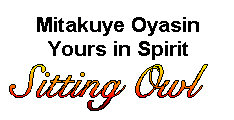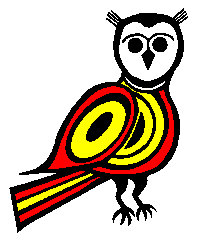|
Main
Menu
External
Pages
|
Consciousness and Responsibility in an Australian Aboriginal Religion
By: Deborah Bird Rose
Review
(Written for Deakin University: Ass. 1 for ASR-103, 1996.)
Deborah Rose has made some interesting discoveries in her cultural identity studies of the Yarralin Aboriginal community situated on the Victoria River Downs station, about 270 kms South West of Katherine in the Northern Territory.
The first points that Rose makes are regarding the aspects that make Aboriginal Religion different from all other religious systems. Because of these differences Westerners often misunderstand the Aboriginal Religion with their set categories of knowledge and experience. The major problem encountered in trying to analyse Aboriginal Religion is that:
"Aboriginal languages implicitly define as unified many of those categories, which Westerners define as separate."
The most important point to make about the Aboriginal way of life is that:
"Religion underlies all actions, expressions and interpretations, for women and men, in daily and ceremonial life, both public and secret."
The best way to understand the Aboriginal unity of all life is by referring to the Dreaming. Stanner (1987: 79) explains the Dreaming as a
"sacred, heroic time... when man and nature came to be as they are." but he points out that:
"One cannot 'fix' the Dreaming in time", as the Aborigines have no "word for time as an abstract concept." The Aborigines refer to 'Dreamtime Stories’, which are of the creator beings (Dreamtime Ancestors). During the 'Dreaming' (time of creation) these ancestors socialised and fought with each other, creating a Dreaming law, and leaving their marks on the land, creating the landscape.
Robert Lawlor in his book 'Voices Of The First Day - Awakening In The Aboriginal Dreamtime' (1991: 1) explains the Dreaming by referring to Jiva or Guruwari, a 'seed power' deposited in the earth. He says that as plants leave an image of themselves invisibly enclosed in the seed (with the potential for future life), so too
"Every meaningful activity, event, or life process that occurs at a particular place leaves behind a vibrational residue in the
earth", and echoing throughout the universe. It is the potency of this residue that the Aborigines call the 'Dreaming' of that place. I feel that an important point Lawlor makes is that:
"Only in extraordinary states of consciousness can one be aware of, or attuned to, the inner Dreaming of the earth."
Characteristic of all Aboriginal communities, the Yarralin people see all forms of life, including the Sun, Moon, and Rain, as having their own Dreaming Law.
"Dreaming Law then is about life - about the principles by which life is maintained and enhanced in this system, in which all parts are interrelated." Because
"Aboriginal morality has to do with maintaining the cosmos as a life enhancing
system", these relationships (between the parts) are based on principles of Response, Balance, Symmetry and Autonomy. For example:
"Without sun the earth would be flooded, while without rain the earth would be burnt. In short, the sun has it's own Law and rain has it's own law." When both follow their own Dreaming Law, they balance each other out, creating a cycle of growth.
While this example of the sun and rain shows the obvious balance in life, it is our own culture that recognises the autonomy of most living things, even though we cultivate and herd a lot of them. Rose explains symmetry thus:
"In order for parts to be balanced, they must be symmetrical, that is, of equal power (physical, social, intellectual etc.)".
The interrelatedness in the Aboriginal world-view brings a responsibility for all living things to
"aim at nurturing the cosmos." The Yarralin people maintain their part of the cosmic system by participating in all aspects of life, involving self-interest, reverence, morality, and mysticism. Obviously maintaining the cosmos also maintains one's own life, so reverence is given to all of life. This interrelatedness and autonomy may seem in contradiction, however I would now like to quote directly from Deborah Rose to make this point all clear.
“In action, parts assert their autonomy and strength; in responding, parts delimit the boundaries of other parts and thus implicitly their own boundaries. Each part of the cosmos is thus seen as a moral agent and in behaving morally each part reproduces the relationships through which the whole system continues to enhance life.”
Predation is seen to be part of maintaining a balance between parts of the cosmos. At times foods become taboo, sometimes because of a death of someone of that particular totem, and sometimes just to give that particular species in a particular area a chance to grow.
"Overabundance is as much a problem as Underabundance." I found it very interesting to read that:
“Yarralin people believe that they themselves are preyed upon by other species, such as a class of being known as Kaiyaxx (custodians of death)... but they do not regard these predations as morally wrong any more than they regard their own hunting as morally wrong.”
On the subject of hunting, Robert Lawlor (1991: 373) became aware (from an Aboriginal elder) of the effect that the loss of hunting and gathering has had on the human psyche.
The old man explained that in the trance vision one can see a "web of intersecting threads" on which the scenes of the tangible world as well as dreams and visions are hung.
"Inner fears", he said, "break that glimpse of an invisible web work, leaving only a world of isolated things."
(Lawlor, 1991: 373)
James (1987: 84) defines the mystical experience as the “over coming of all the usual barriers between the individual and the absolute.” However the Yarralin people do not see barriers between themselves and the absolute. This is because of the Aborigines' oneness with the cosmos, and it is this oneness or interrelationship that they consider to be the absolute. Stanner (1987: 84) refers to man's 'Philosophy of life' as the way life ought to be, and compares this with the way life actually is, calling them 'Ideal' and 'Real'. He says that when the two drift too far apart, men and women must either make changes to their way of life, their Philosophy, both of these, or live unhappily somewhere in between. The gap between Ideal and Real for the Aboriginal people is almost non-existent. In my opinion the examples here from James and Stanner indicates that the Traditional Aboriginal people have no gap between the sacred and the profane.
Rose concludes with three major points. Firstly the cosmos 'works' because all the parts regulate each other. Secondly all of life is sacred and therefore there is no distinction between the sacred and the profane. And thirdly
"The paradox of the unity of sacred and profane is frequently taken to be a distinguishing characteristic of mystical experience (Eliade, 1958: 29; Stace, 1960: 253)." Life is a miracle, so it is only natural that it should also be mystical. Finally Rose says that:
"Life is sacred" and because "everything is alive... all parts of the cosmos act responsibly and engage in mystical union with the cosmic whole." Then the whole system continues to enhance life.
I have chosen this reading by Deborah Rose because I have a strong interest in consciousness, both Psychological and Spiritual. I believe there are many levels of consciousness; and that the more primitive cultures use more of these levels. Therefore I have chosen Aboriginal Religion because it may be the most primitive (original), but the main reason for this choice is that it exemplifies the effects on human life when there is no distinction between the sacred and the profane. In the Traditional Aboriginal way of life there is only harmony, something that is missing from today's Western society.
The one important point that Rose neglects to make is the importance and abundance, in Aboriginal Religion, of continuity. Here I would like to quote an Aboriginal elder, that Robert Lawlor quoted on the back cover of his previously mentioned book.
“They say we have been here for 60,000 years, but it is much longer. We have been here since the time before time began. We have come directly out of the Dreamtime of the great creative ancestors. We have lived and kept the earth as it was on the First Day. All other peoples of the world came from us.”
 
|